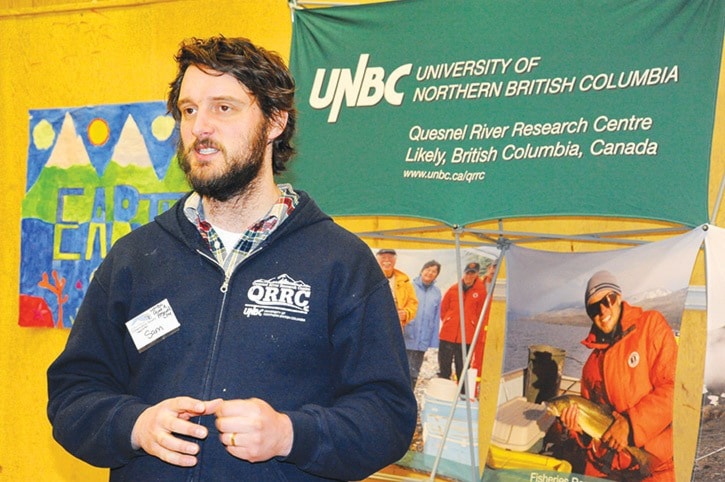In the aftermath of the Mount Polley Mine tailings impoundment breach Quesnel Lake’s level rose by 7.7 centimetres, its temperature at the bottom increased by one to 2.5 C., and sediment samples showed elevated copper concentrations, often above sediment quality guidelines for freshwater ecosystems.
Those are some of the findings outlined in a scientific research paper published in the journal Geophysical Research Letters on the impacts of the Aug. 4, 2014 breach.
As the paper was released online Tuesday, one of the five UNBC scientists who authored the paper said it is the first of what will be a long series of articles.
“It was important to release the paper relatively quickly because it was such a dramatic event,” UNBC Geography professor Dr. Ellen Petticrew said of the breach. “We could see big changes in both the water temperature in the bottom, on the dispersion of the plume and on the quality of the plume so we wanted get that out so that people were aware of what was happening.”
Joining Petticrew on the research team were UNBC scientists Sam Albers, Phil Owens, Stephen Dery and Nikolaus Ganter.
Their paper focused on data that was collected between Aug. 4 and Oct. 4.
“People have been collecting more data since then, but it takes a while to get material out, evaluated and published,” Petticrew said.
They also used background data prepared by the Department of Fisheries and Oceans, University of B.C. and the Quesnel River Research Centre (QRRC) that provided information on the physical aspects of the lake and some of the factors that regulate how material moves around the lake.
Albers manages the QRRC and said the newly released paper is the formal peer-reviewed version of the story he and his colleagues have been repeating for months.
“It’s about the spread of the sediment, the watershed, and some of the physical changes in the lake that have contributed to some unusual mixing patterns,” he said.
The lake turnover was early in the fall and the spring, Albers said, noting for the next several years those turnovers will be important to observe.
“Remember in late December and early January the lake and river turned green for about a month because of the sediment caught near the breach site was being flushed out,” he said. “Every year we will look at it closely to see if we see some of the same patterns we saw this year.”
Their research also found that turbidity of the water column was increased into the West Arm of Quesnel Lake, indicating the existence of a sediment plume at depths below 30 metres, and that ultra-fine sediments remained suspended.
Rocking of the water column also redirected the sediment plume — estimated to be 600 metres long and one to three metres deep — toward the North and East Arms of Quesnel Lake, as well as towards the lake outflow, Quesnel River.
Several research projects taking place or planned at the QRRC involve people from UNBC, the University of Toronto, Thompson Rivers University and the United Kingdom.
The sediment plume, made up of tailings and scoured natural material that was washed down from Hazeltine Creek, continues to be a main concern for scientists.
“We know the plume is high in copper and one of the big concerns is will it stay there in the plume or will it find its way into the food web?” Albers said.
A good reason for publishing the paper in an international journal is to make the Mount Polley Mine spill more of a global story, Petticrew said.
“Mining is global and dams break all over the world, but much of the story has been presented and discussed in B.C. because that’s where the regulations are and that’s where the mine is.”
